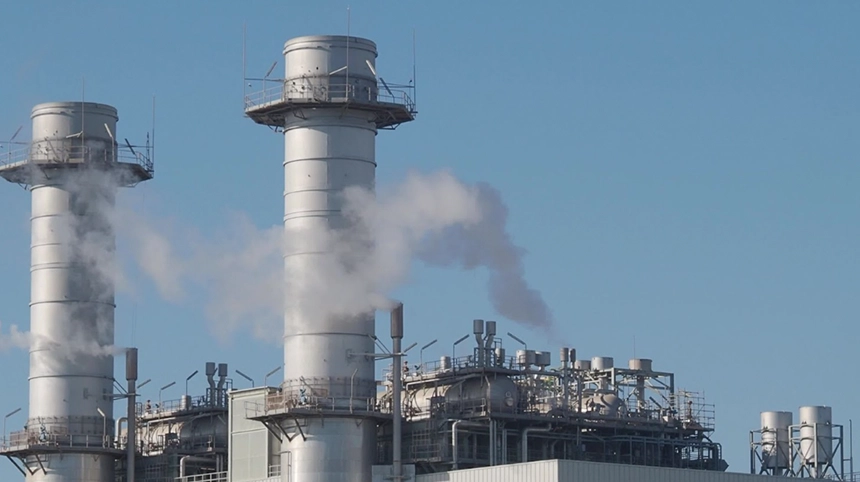Industrial Scrubbers: 5 Cutting-Edge Solutions for Power Plant Flue Gas Desulfurization

Introduction
Sulfur dioxide (SO2) escaping from power plant chimneys isn’t merely a cause of acid rain; crucially, it also poses a genuine danger to both human health and our fragile ecosystem. Confronting strict rules, power plant managers feel the impetus to use effective flue gas cleanup. Industrial scrubbers serve as a key tool for flue gas desulfurization (FGD). They furnish dependable SO₂ management. This article discloses five advanced methods. These span from circulating fluidized bed (CFB) to integrated pollution control. These solutions can help you keep sulfur dioxide emissions far below 10mg/Nm³. So, how does Guantong tailor an emission control system for your power plant?
Overview of Scrubber Technologies
The foundation of flue gas treatment in power plants lies in relying on scrubbers to extract pollutants from the flue gas. The following are the three main types and their uses:
- Wet Flue Gas Desulfurization (Wet FGD): This method uses limestone slurry to consume and eliminate sulfur dioxide, with extremely high efficiency, and the highest efficiency can even reach up to 98%. It is most suitable for large power plants.
- Dry Flue Gas Desulfurization (Dry FGD): This process, by introducing dry absorbents, significantly curtails water consumption. Especially for smaller units, it has proven to be a remarkably practical and highly efficient method, often easily achieving around 90% efficiency.
- Semi-Dry Flue Gas Desulfurization (Semi-Dry FGD): This type fuses wet and dry advantages, yielding dry byproducts. It fits medium-sized plants perfectly, with efficiency often surpassing 95%.
Niche scrubbers, like venturi models, triumph with flue gas dense with particulates. Conversely, acid scrubbers address noxious gases in chemical industries. Process control instruments and flow meters dictate precise system operation. Concurrently, they hone sulfur dioxide removal.
Learn more about Guantong’s FGD systems for power plants.
5 Cutting-Edge Desulfurization Solutions
1. Guantong’s CFB Semi-Dry Desulfurization Technology
Circulating fluidized bed (CFB) technology is the primary innovation of Guantong. In semi-dry flue gas desulfurization, the removal rate of sulfur dioxide by this system reaches over 99%.
- Working Principle: Limestone slurry traverses a fluidized bed. There, it engages with flue gas SO₂ to yield dry calcium sulfate powder.
- Advantages: This system boasts no wastewater discharge and readily managed dry byproducts. It also presents a compact footprint and minimal upkeep expenses.
- Technical Details: Scrubber vessels employ corrosion-resistant materials. And scrubber pumps guarantee stable slurry circulation.
- Example: Guantong’s CFB technology in medium-sized power plants attains SO₂ emissions below 10mg/Nm³. Hence, it exceeds stringent standards.
2. Wet Limestone-Gypsum Method
Wet flue gas desulfurization is based on limestone flue gas desulfurization and is widely used in large power plants, with an efficiency of up to 98%.
- Strengths: Handles high SO₂ concentrations, with gypsum byproducts usable in construction.
- Limitations: High water consumption (10–15 tons per ton of SO₂), complex wastewater treatment, and large footprint.
- Enhancements: Process control optimizes slurry circulation. It can reduce energy use.
Although wet scrubbers are effective, they have encountered challenges in water-scarce areas. This stems from their environmental footprint.
3. Spray Dryer Absorber (SDA)
Spray dryer absorber (SDA) is a flexible semi-dry FGD solution, ideal for small to medium-sized power plants.
- Principle: Atomized lime slurry is sprayed into flue gas, which can absorb SO₂ and drying into powder.
- Advantages: Low water use, dry byproducts, and minimal maintenance.
- Applications: Achieves 90–95% efficiency, suitable for low-sulfur coal plants.
Example: A 500MW power plant using SDA reduced SO₂ emissions to 50mg/Nm³, cutting maintenance costs by 15%.
4. DS/Dry Acid Gas Removal Technology
Our dry FGD technology (DS) can be used for chemical industries, efficiently handling acid gases.
- Features: Injects dry calcium hydroxide, producing dry byproducts without wastewater.
- Applicability: Acid scrubbers excel in low-water scenarios, with ~90% efficiency.
- Benefits: Compact design, ideal for space-constrained facilities.
Example: A chemical plant using Guantong’s DS technology controlled SO₂ emissions at 30mg/Nm³.
5. Integrated Pollution Control Systems
Integrated pollution control fuses flue gas desulfurization with selective catalytic reduction (SCR) or SNCR. Thus, it achieves simultaneous SO₂ and NOx management.
- Synergistic Benefits: Shared equipment reduces capital costs, optimizing operational efficiency.
- Technical Details: Observe how electrostatic precipitators or particulate filters meticulously sweep away dust. Concurrently, SCR systems are hard at work grappling with NOx. Then, quite significantly, FGD systems are tailored to tame SO₂ emissions.
- Challenges: Ammonia slip requires precise metering control.
Example: Guantong’s emission control system achieved SO₂<10mg/Nm³ and NOx<50mg/Nm³, saving 30% in operational costs.
Case Study: Guantong’s CFB Technology Excellence
In the Cabot Xuyang Chemical project, Guantong’s circulating fluidized bed technology demonstrated exceptional performance. Using semi-dry FGD with a gas scrubber system and process control instruments, the project achieved:
- SO₂ emissions: ≤10mg/Nm³, well below China’s standard (35mg/Nm³).
- Byproducts: Dry calcium sulfate powder, directly used in construction, with zero wastewater.
- Efficiency: >99% desulfurization, with 20% lower operating costs.
Corrosion-resistant scrubber vessels and dependable scrubber pumps guaranteed system stability. This attested to Guantong’s FGD technology’s reliability.
Conclusion
Eradicating sulfur dioxide proves vital for compliance and sustainability. Industrial scrubbers furnish robust power plant flue gas treatment. They utilize circulating fluidized bed, spray dryer absorber, and integrated pollution control methods. Guantong’s CFB technology spearheads with over 99% SO₂ control efficiency. Collaborate with Guantong to tailor advanced flue gas desulfurization solutions for your power plant. This ensures pristine production. Reach out to us!
